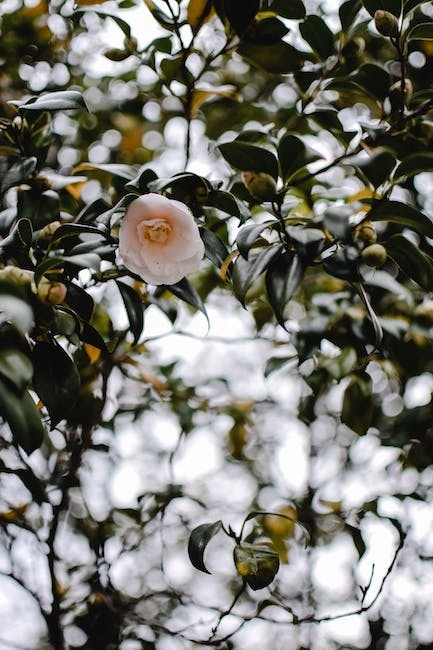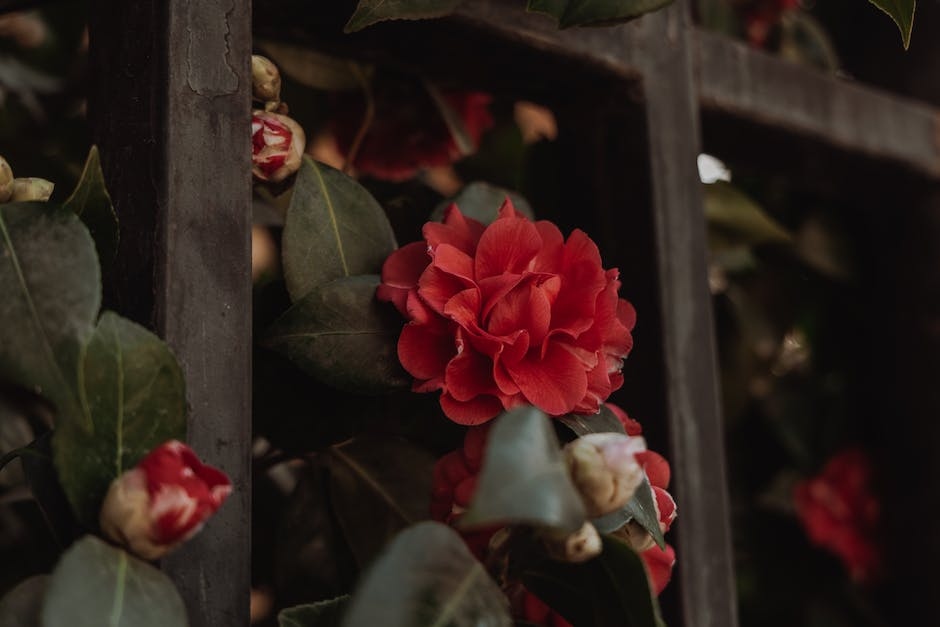The Art of Propagating Camellia Sinensis: Methods and Techniques
If you’re a tea lover, chances are you’ve heard of Camellia sinensis, the plant responsible for producing the leaves that are used to make tea. But have you ever wondered how these plants are grown and propagated? In this blog post, we’ll explore the various methods used to propagate Camellia sinensis, including seeds, cuttings, grafting, and layering.
Selecting Healthy Mother Plants
The first step in Camellia sinensis propagation is selecting healthy and disease-free mother plants. These plants should have desirable characteristics such as high yield, good quality, and resistance to pests and environmental stress. This ensures that the offspring will inherit these traits as well.
Seeds
Seeds are the most common method of propagation, but they require patience and expertise. Camellia sinensis seeds have a low germination rate, and the resulting plants may vary in traits. However, this method is useful for creating new cultivars and hybrids.
Cuttings
Cuttings involve taking a stem or leaf from a mother plant and rooting it in a suitable medium such as soil or water. This method produces genetically identical plants and allows for the propagation of specific cultivars and hybrids. Cuttings can be taken in the spring or summer, and rooting usually takes several weeks.
Grafting
Grafting involves attaching a scion (a stem or bud from a desired cultivar or hybrid) onto a rootstock (a seedling or mature plant) of a different Camellia sinensis variety. This method is commonly used for commercial cultivation as it enhances plant vigor, disease resistance, and yield. Grafting should be done in the spring or early summer.
Layering
Layering is a method of propagation where a branch of a mother plant is bent and buried in the soil, allowing it to develop roots and form a new plant. This method is useful for propagating plants that are difficult to root from cuttings or grafting. Layering is typically done in the fall or winter.
Care and Maintenance
Successful Camellia sinensis propagation requires proper timing, environmental conditions, and care. Regular watering, fertilizing, and pruning are essential to ensure that the plants remain healthy and productive.
| Propagation Method | Advantages | Disadvantages |
|---|---|---|
| Seeds | Useful for creating new cultivars and hybrids | Low germination rate, plants may vary in traits |
| Cuttings | Produces genetically identical plants, allows for propagation of specific cultivars and hybrids | Requires expertise, rooting can take several weeks |
| Grafting | Enhances plant vigor, disease resistance, and yield | Requires expertise, can be expensive |
| Layering | Useful for propagating plants that are difficult to root from cuttings or grafting | Can take several months for the new plant to form |
Camellia sinensis propagation is an art that requires patience, expertise, and care. Whether you’re a commercial grower or a home gardener, understanding these propagation methods can help you produce healthy and productive tea plants that will provide you with years of delicious tea leaves.
Growing Your Own Camellia Sinensis: Tips and Tricks
Have you ever been curious about growing your own tea? Camellia sinensis, the plant from which all true teas are made, can be grown in your own backyard or even in a container on your patio. Here are some tips and tricks to help you grow your own camellia sinensis plant.
Soil and Location
The first step in growing camellia sinensis is choosing the right soil and location. The plant prefers well-draining acidic soil with a pH range of 4.5-6.0. It is important to enrich the soil with organic matter, such as compost or peat moss, to provide necessary nutrients for the plant.
In terms of location, camellia sinensis thrives in partial to full sun, but it should not be exposed to harsh afternoon sun. It is important to choose a location with the right amount of sunlight for the plant to grow properly.
Temperature and Humidity
Camellia sinensis prefers a temperature range of 65-85F (18-29C). The tea plant can tolerate cold temperatures but not frost. Humidity is also important for camellia sinensis propagation, with a range of 50-70% being ideal. Dry air can cause leaf drop and stunted growth in the plant.
Container Size and Spacing
Camellia sinensis can be grown in containers, but it is important to choose a container that is at least 12 inches (30 cm) in diameter and 14 inches (35 cm) deep to allow for proper root development. The container should also have drainage holes to prevent waterlogging.
When planting camellia sinensis in the ground, it is important to space the plants at least 3-4 feet (1-1.2 m) apart to ensure proper air circulation and prevent disease spread.

Irrigation and Mulching
Proper irrigation is critical for camellia sinensis propagation. The plant needs to be watered regularly but not overwatered, as this can lead to root rot. The soil should be kept moist but not waterlogged.
Mulching around the base of the plant can help retain moisture in the soil and prevent weed growth. It also helps regulate soil temperature.
Harvesting and Enjoying Your Tea
After about three years, your camellia sinensis plant should be ready for its first harvest. The top two leaves and bud should be plucked, and the leaves should be dried and processed according to the desired tea type.
Now that you have grown and harvested your own tea, it’s time to enjoy it! Brew a fresh cup and savor the taste of your own homegrown tea.
Growing camellia sinensis can be a rewarding and enjoyable experience. With the right soil, location, temperature, and humidity, you can have your own tea garden in no time. Happy growing!
Exploring Different Methods of Propagating Camellia Sinensis
Camellia Sinensis, commonly known as the tea plant, is a versatile and popular plant that can be grown in various climates and regions. If you’re interested in growing your own tea plant, you have several options when it comes to propagation. In this blog post, we’ll explore the four main methods of Camellia Sinensis propagation and their advantages and disadvantages.
Seed Propagation
Seed propagation is the most straightforward and inexpensive method of Camellia Sinensis propagation. It involves planting seeds and waiting for them to germinate. While this method may seem easy, it takes a long time to produce a mature plant, sometimes as long as 5 to 7 years. Additionally, the resulting plant may not be true to the parent plant, meaning it may not have the same flavor or aroma.
Cutting Propagation
Cutting propagation is a faster method of Camellia Sinensis propagation. It involves taking a cutting from a mature plant and rooting it in a rooting hormone. This method ensures that the offspring is true to the parent plant, but it requires more skill and effort than seed propagation. The success rate may also vary, meaning you may not get the desired number of plants.
Layering Propagation
Layering propagation is an easy and reliable method of Camellia Sinensis propagation. It involves bending a low branch to the ground, making a small cut, and burying the cut part in the soil. The buried part will develop roots, and the branch can be cut and replanted as a new plant. While this method is easy and reliable, it takes more time than cutting propagation and may not produce as many offspring.
Grafting Propagation
Grafting propagation is a specialized method of Camellia Sinensis propagation that involves joining a Camellia Sinensis scion to a rootstock of a different plant species. This method allows for the propagation of specific cultivars and can improve the plant’s resistance to pests and diseases. However, it requires specialized skills and equipment, and the resulting plant may not have the same flavor or aroma as the parent plant.
Choosing the Right Method
Each method of Camellia Sinensis propagation has its advantages and disadvantages, and the choice depends on the grower’s goals, resources, and preferences. If you’re looking for an easy and inexpensive method, seed propagation may be the way to go. If you want to ensure that the offspring is true to the parent plant, cutting propagation is your best bet. Layering propagation is an easy and reliable method, while grafting propagation is a specialized technique that requires more skill and equipment.
Conclusion
Camellia Sinensis propagation is an exciting and rewarding process that allows you to grow your own tea plant. Whether you choose seed propagation, cutting propagation, layering propagation, or grafting propagation, you’re sure to enjoy the process and the end result. We hope this blog post has helped you understand the different methods of Camellia Sinensis propagation and choose the right one for your needs. Happy growing!
Overcoming Common Challenges in Camellia Sinensis Propagation
Camellia sinensis, also known as the tea plant, is a popular crop for growers due to its high demand in the tea industry. However, propagating this plant can be a challenge, and there are several common issues that growers may encounter during the process. In this blog post, we will discuss these issues and provide tips on how to overcome them.
Poor Germination
One of the most common issues during camellia sinensis propagation is poor germination. This can be caused by a variety of factors, including old or low-quality seeds, insufficient moisture, incorrect temperature, or improper soil conditions.
To troubleshoot poor germination, growers should ensure they are using fresh and high-quality seeds. They should also keep the soil moist but not waterlogged, maintain a consistent temperature of around 68-77F (20-25C), and use a well-draining soil mix with good aeration.
Damping Off
Another issue that growers may encounter is damping off, which is a fungal disease that can affect young seedlings and cause them to wilt and die. This can be caused by overwatering, overcrowding of seedlings, and poor air circulation.
To prevent damping off, growers should avoid overwatering and ensure that the soil has good drainage. They should also space out seedlings to allow for proper air circulation and use a sterile soil mix.
Nutrient Deficiencies
Nutrient deficiencies can also be a problem during camellia sinensis propagation. Common deficiencies include nitrogen, phosphorus, and potassium.
To address nutrient deficiencies, growers can add a balanced fertilizer to the soil or use a foliar spray. It’s important to follow the recommended dosages and not over-fertilize, which can lead to other issues.
Conclusion
Camellia sinensis propagation can be challenging, but with the right techniques and care, growers can overcome common issues such as poor germination, damping off, and nutrient deficiencies. By using high-quality seeds, maintaining proper moisture and temperature, providing good air circulation, and addressing nutrient deficiencies, growers can successfully propagate this valuable crop. Happy growing!


Leave a Reply